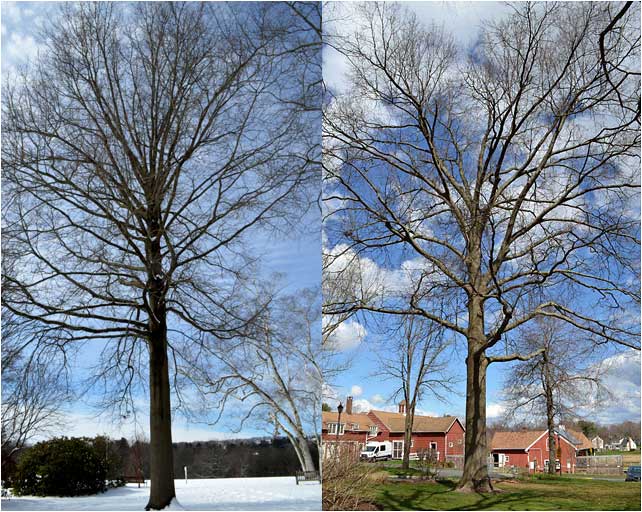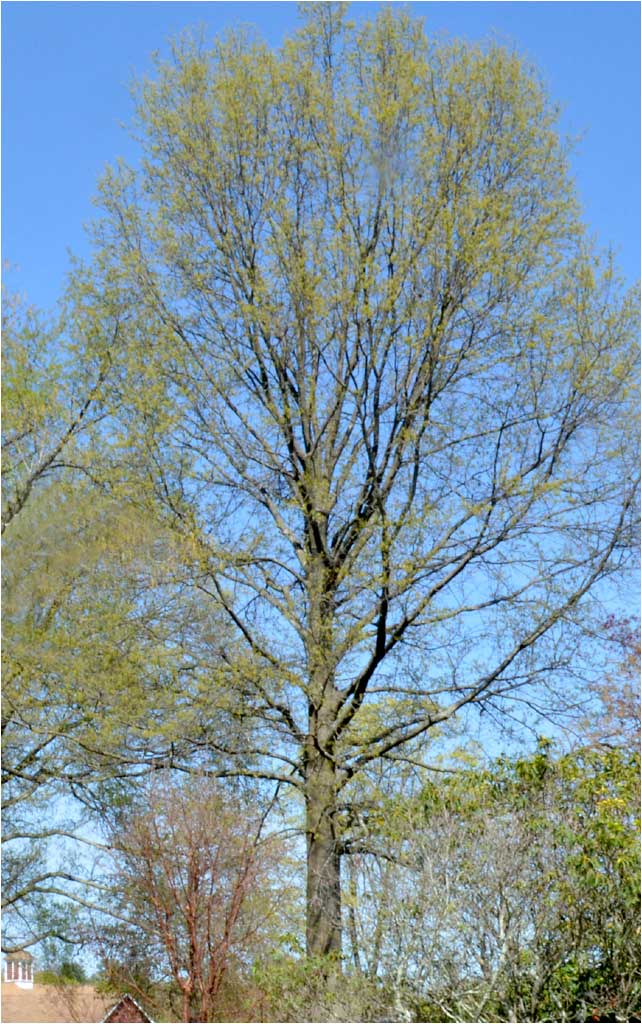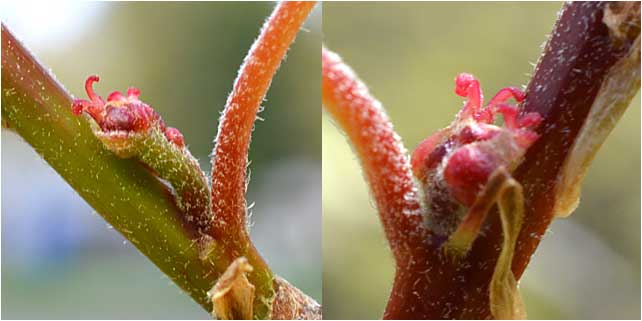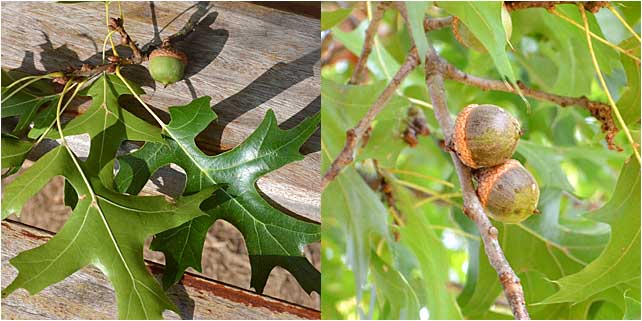11. PIN OAK, Quercus palustris

Winter. A wonderful opportunity to see 2 Oaks (Pin Oak and Red Oak) side-by-side without moving a step. Although they are the same species (Quercus means "fine tree" in some interpretations) they are quite different. The Red Oak (right) has fewer, larger branches and a more simple habit. The Pin Oak has lots of branches of various sizes, all going up, out, and (for the small branchlets toward the bottom of the canopy) even down.
EARLY SPRING

Quercus palustris looks like most Oaks in early spring, and while small leaves are emerging, it is the male catkins that give the tree its unique color and look. Catkins (named because they look like fluffy kitten tails in Dutch) are the male pollinator parts of the Oak.
Oak trees are monoecious (M/F flowers on the same tree). Here are the catkins:

FEMALE FLOWER HUNT

It is nearly impossible to see the female flowers on most tall, mature trees. You must view the branches at eye level. The flowers are tiny (tiny!) and nestle in between branches (this space is called the leaf axil, and where you will find the acorns later in the year). It is tricky to find your first one - and then you'll realize they are all over the tree!
The Roly Poly Gall

Here's an uninvited guest that shows up every year on Pin Oaks. It is the Roly Poly Gall, aka Gall Wasp. The sphere is about 1/2 of an inch, and houses a single gall wasp. Some galls may be destructive to Pin Oaks, but this one is tolerated if not exactly given an invitation. Birds will often poke holes in the gall to get at the growing wasp inside.
SUMMER, FULL FOLIAGE

Summer sees the full foliage bloom of the Pin Oak, and they are stately and fine Oak trees. They are, however, not known for their longevity (unlike White and other Red Oaks). 100 years is about the max for urban trees, and since CT planted a lot of Pin Oaks (they are fast growing for an oak) in their "new" neighborhoods back in the 1920s and 30s - they will soon need to be replaced. Whenever possible, please consider another large native tree - the environment will thank you for it.
LEAVES, ACORNS

Pin Oak leaves do not have as many lobes as Red Oaks do, and the lobes are deep, almost to the mid-vein. Their acorns are the smallest in this region, only about 1/2 inch or so with small caps.
BARK

Pin Oaks tend to have long, very straight trunks before the first branches appear. Doubly so if the lower branchlets have been trimmed off. For an oak, the bark is smooth and on the lighter side, giving the trunk (bole) a distinctive look.
FALL

Fall color of the Pin Oak at the Westmoor Arboretum. As with all trees, coloration varies each season and by tree location. Sometimes brilliant, sometimes muted.
THE KEYSTONE CORNER

At the Westmoor Arboretum, this section is called The Keystone Corner because it contains three "keystone" species of native trees - all in a row. Keystone species provide habitat for hundreds of native organisms including fungi, bacteria, insects, birds, and mammals. Oaks (Red & Pin here) are the # 1 keystone tree species and Black Cherry is # 2. (Douglas Tallamy, book: Bringing Nature Home)